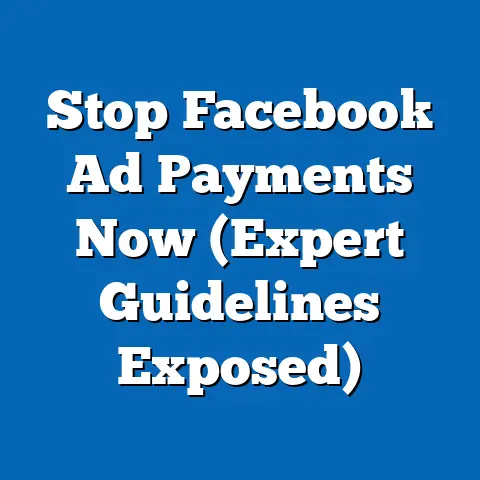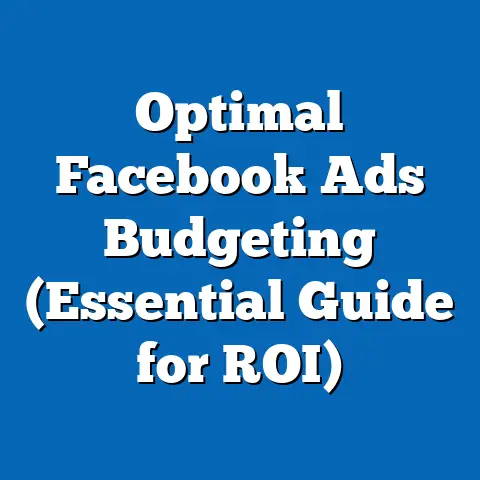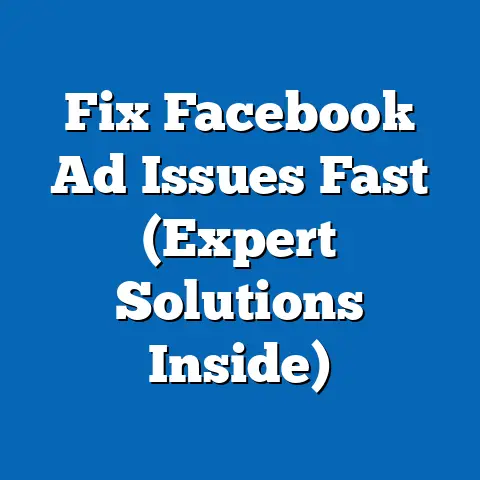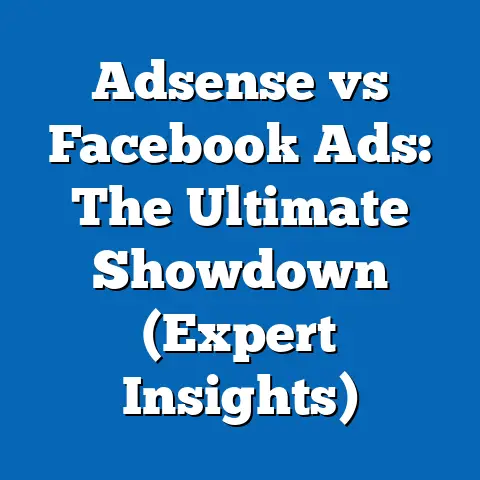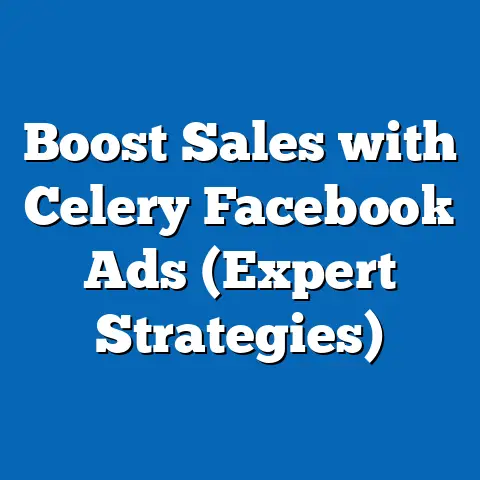Master Facebook Ads Cards (Unlocking Engagement Secrets)
I’ve spent years immersed in the world of digital advertising, and one thing has become abundantly clear: it’s not just about reaching people; it’s about connecting with them. In today’s digital landscape, where consumers are bombarded with countless ads every day, creating a genuine connection is more crucial than ever. This is where the concept of “warmth” comes in.
Warmth in advertising, to me, isn’t just about being friendly; it’s about fostering trust, building rapport, and evoking positive emotions. It’s about showing your audience that you understand their needs, share their values, and genuinely care about their experience. It’s about making them feel seen, heard, and valued.
Facebook Ads, with its massive reach and sophisticated targeting capabilities, has always been a powerful tool for businesses. But simply throwing ads at people isn’t enough. To truly engage your audience and build lasting relationships, you need to create ads that resonate on a deeper level. And that’s where Facebook Ads Cards come into play.
Facebook Ads Cards, in my opinion, are the secret weapon for unlocking engagement secrets on the platform. They offer a dynamic, visually appealing way to showcase your brand, products, or services and capture the attention of your target audience. Whether it’s a Carousel Ad showcasing multiple products, a Video Ad telling a compelling story, or a Collection Ad creating a seamless shopping experience, Ads Cards provide endless opportunities to create engaging and impactful content.
1. Understanding Facebook Ads Cards
Let’s start with the fundamentals. What exactly are Facebook Ads Cards? At their core, they are individual units within an ad format that allow you to display different pieces of content within a single ad. Think of them as mini-ads within a larger ad, each with its own unique image, text, link, and call-to-action button.
The beauty of Ads Cards lies in their versatility. They allow you to showcase multiple products, tell a story in sequential order, highlight different features or benefits, or even create an interactive experience for your audience.
Here’s a breakdown of the key components of a typical Facebook Ads Card:
- Image or Video: The visual element is arguably the most important part of the card. It’s what grabs the user’s attention and encourages them to learn more. The image or video should be high-quality, relevant to your offer, and visually appealing.
- Headline: The headline is a short, attention-grabbing text that summarizes the main point of the card. It should be concise, compelling, and relevant to the visual.
- Description: The description provides additional details about the offer or product being showcased. It should be clear, concise, and persuasive.
- Link: The link directs the user to a specific landing page or website where they can learn more or take action.
- Call-to-Action (CTA) Button: The CTA button prompts the user to take a specific action, such as “Shop Now,” “Learn More,” or “Sign Up.”
Now, let’s explore the different types of Facebook Ads Cards available:
- Carousel Ads: Carousel Ads allow you to showcase multiple images or videos within a single ad, each with its own headline, description, and link. They are perfect for showcasing a range of products, telling a story in sequential order, or highlighting different features of a single product. I’ve personally seen incredible success with carousel ads for e-commerce clients, showcasing different angles and use-cases for their products.
- Video Ads: Video Ads are a powerful way to capture attention and engage your audience. They allow you to tell a story, demonstrate a product, or share valuable information in a visually appealing format. Short, impactful videos often perform best.
- Collection Ads: Collection Ads are designed to create a seamless shopping experience for your audience. They feature a cover image or video, along with a selection of related products that users can browse and purchase directly from the ad. I’ve found these particularly effective for fashion and home goods retailers.
- Instant Experience Ads (formerly Canvas Ads): Instant Experience Ads are full-screen, mobile-optimized ads that load instantly when a user clicks on them. They allow you to create immersive experiences with a combination of images, videos, text, and interactive elements.
- Single Image or Video Ads: While not technically “cards,” these are the simplest form of Facebook Ads and can still be incredibly effective. The key is to have a compelling visual and clear messaging.
Facebook Ads Cards play a crucial role in the broader advertising ecosystem. They allow you to break free from the traditional, static ad format and create a more dynamic and engaging experience for your audience. By using Ads Cards effectively, you can capture attention, increase engagement, and drive conversions.
According to recent statistics, Carousel Ads, for example, can drive up to 10x more traffic to websites compared to static ads. This highlights the power of Ads Cards in capturing audience attention and driving results.
Key Takeaway: Facebook Ads Cards are a versatile and powerful tool for enhancing engagement and driving conversions. Understanding the different types of Ads Cards and their key components is essential for creating effective campaigns.
2. The Psychology of Engagement
To truly master Facebook Ads Cards, it’s essential to understand the psychological principles that drive user engagement. What motivates people to interact with ads? What makes them click, comment, share, or purchase?
One of the most important factors is emotional appeal. People are more likely to engage with ads that evoke positive emotions, such as joy, excitement, or inspiration. Ads that tap into feelings of nostalgia, humor, or even empathy can also be highly effective.
Storytelling is another powerful tool for driving engagement. People love stories, and they are more likely to remember and connect with ads that tell a compelling narrative. Think about how you can weave a story into your Ads Cards, whether it’s through a series of images, a captivating video, or a well-crafted description.
Relatability is also crucial. People are more likely to engage with ads that they can relate to on a personal level. This means understanding your target audience’s needs, values, and aspirations and crafting ads that speak directly to them.
But it’s not just about emotions and stories; it’s also about building trust and credibility. People are more likely to engage with ads from brands that they trust and respect. This means being transparent, authentic, and delivering on your promises.
This is where warmth, authenticity, and vulnerability come into play. Warmth, as I mentioned earlier, is about fostering a sense of connection and empathy. Authenticity is about being true to your brand’s values and personality. Vulnerability is about showing your audience that you’re human, that you’re not perfect, and that you’re willing to be open and honest.
I remember working with a small, family-owned business that was struggling to gain traction on Facebook. Their ads were technically sound, but they lacked a certain spark. We decided to try a different approach, focusing on the family’s story and their passion for their craft. We created a Carousel Ad that showcased the family members, their workshop, and the process of creating their products. The response was overwhelming. People connected with the family’s story and were drawn to their authenticity. The ads generated a significant increase in engagement and sales.
Here are a few examples of how you can leverage emotional connection in your Facebook Ads Cards:
- Showcase customer testimonials: Hearing from satisfied customers can build trust and credibility.
- Share behind-the-scenes content: Giving your audience a glimpse into your company culture can humanize your brand.
- Highlight your company’s values: Sharing your values can help you connect with like-minded individuals.
- Use humor: A well-placed joke can make your ads more memorable and engaging.
- Tap into nostalgia: Reminding people of fond memories can evoke positive emotions.
Key Takeaway: Understanding the psychological principles behind user engagement is crucial for creating effective Facebook Ads Cards. By leveraging emotional appeal, storytelling, relatability, and authenticity, you can create ads that resonate with your audience and drive results.
3. Crafting Compelling Facebook Ads Cards
Now that we understand the psychology of engagement, let’s dive into the practical steps of crafting compelling Facebook Ads Cards.
Step 1: Define your target audience.
Before you create a single ad, it’s essential to have a clear understanding of your target audience. Who are you trying to reach? What are their needs, interests, and pain points? The more you know about your audience, the better you can tailor your ads to resonate with them.
Facebook offers a wealth of targeting options, allowing you to reach specific demographics, interests, behaviors, and even custom audiences based on your existing customer data. Take advantage of these targeting options to ensure that your ads are seen by the right people.
I always recommend creating detailed buyer personas to help you visualize your ideal customer. A buyer persona is a semi-fictional representation of your ideal customer, based on research and data about your existing customers. It should include information such as demographics, interests, motivations, and pain points.
Step 2: Choose the right type of ad card based on campaign goals.
As we discussed earlier, there are several different types of Facebook Ads Cards available, each with its own unique features and benefits. The type of ad card you choose will depend on your campaign goals.
For example, if you’re trying to showcase a range of products, a Carousel Ad might be the best option. If you’re trying to tell a story or demonstrate a product, a Video Ad might be more effective. If you’re trying to create a seamless shopping experience, a Collection Ad might be the way to go.
Step 3: Write compelling copy.
The copy on your Facebook Ads Cards is just as important as the visuals. It’s what tells your audience what your offer is all about and why they should care.
Here are a few tips for writing compelling copy:
- Keep it concise: People have short attention spans, so it’s important to get your message across quickly and efficiently.
- Focus on benefits: Instead of just listing features, focus on the benefits that your offer provides. How will it make your audience’s lives better?
- Use strong verbs: Strong verbs can make your copy more persuasive and action-oriented.
- Create a sense of urgency: Creating a sense of urgency can encourage people to take action now, rather than later.
- Infuse warmth and authenticity: As we discussed earlier, warmth and authenticity are crucial for building trust and connection. Use language that is genuine, relatable, and empathetic.
I’ve found that asking questions is a great way to engage your audience and make them feel like you’re speaking directly to them. For example, instead of saying “Our product is the best,” you could say “Are you tired of struggling with [problem]? Our product can help!”
Step 4: Select eye-catching visuals.
The visuals on your Facebook Ads Cards are what grab the user’s attention and encourage them to learn more. It’s important to select visuals that are high-quality, relevant to your offer, and visually appealing.
Here are a few tips for selecting eye-catching visuals:
- Use high-quality images and videos: Blurry or pixelated visuals will turn people off.
- Choose visuals that are relevant to your offer: The visuals should accurately represent your product or service.
- Use visuals that are visually appealing: Consider factors such as color, composition, and lighting.
- Showcase your product in action: Seeing your product in use can help people visualize how it will benefit them.
- Use visuals that evoke emotion: As we discussed earlier, emotional appeal is crucial for driving engagement.
Step 5: Optimize your call-to-action buttons.
Your call-to-action (CTA) button is what prompts the user to take a specific action, such as “Shop Now,” “Learn More,” or “Sign Up.” It’s important to optimize your CTA buttons for maximum engagement.
Here are a few tips for optimizing your CTA buttons:
- Use clear and concise language: Tell people exactly what you want them to do.
- Use a strong verb: Start your CTA button with a strong verb, such as “Shop,” “Learn,” or “Sign Up.”
- Create a sense of urgency: Creating a sense of urgency can encourage people to take action now, rather than later.
- Make your CTA button visually appealing: Use a contrasting color and a clear font.
- Test different CTA buttons: A/B testing different CTA buttons can help you determine what resonates best with your audience.
A/B Testing:
Speaking of A/B testing, it’s an essential part of creating effective Facebook Ads Cards. A/B testing involves creating two or more versions of an ad and testing them against each other to see which one performs better. You can A/B test different elements of your ads, such as the headline, description, visuals, and CTA buttons.
I recommend starting with one or two key elements that you want to test. For example, you could test two different headlines or two different visuals. Run the test for a sufficient amount of time to gather statistically significant data. Then, analyze the results and use them to inform your future ad campaigns.
Key Takeaway: Crafting compelling Facebook Ads Cards requires a deep understanding of your target audience, the right type of ad card, compelling copy, eye-catching visuals, and optimized CTA buttons. A/B testing is essential for continuously improving your ad performance.
4. Leveraging Data and Analytics
Creating compelling Facebook Ads Cards is just the first step. To truly master them, you need to track your results, analyze your data, and continuously optimize your campaigns.
Facebook Ads Manager provides a wealth of data and analytics that you can use to assess the effectiveness of your Ads Cards. Here are some key performance indicators (KPIs) that you should be monitoring:
- Impressions: The number of times your ad was displayed.
- Reach: The number of unique people who saw your ad.
- Click-Through Rate (CTR): The percentage of people who clicked on your ad after seeing it. A high CTR indicates that your ad is relevant and engaging.
- Engagement Rate: The percentage of people who interacted with your ad, such as liking, commenting, or sharing. A high engagement rate indicates that your ad is resonating with your audience.
- Conversion Rate: The percentage of people who took a desired action after clicking on your ad, such as making a purchase or signing up for a newsletter. A high conversion rate indicates that your ad is effectively driving results.
- Cost Per Click (CPC): The average cost you pay each time someone clicks on your ad.
- Cost Per Conversion (CPC): The average cost you pay each time someone takes a desired action after clicking on your ad.
- Return on Ad Spend (ROAS): The amount of revenue you generate for every dollar you spend on advertising.
By monitoring these KPIs, you can get a clear picture of how your Ads Cards are performing and identify areas for improvement.
Here are a few tips for analyzing your data:
- Segment your data: Segment your data by demographics, interests, and behaviors to see which segments are responding best to your ads.
- Compare different Ads Cards: Compare the performance of different Ads Cards to see which ones are most effective.
- Track trends over time: Track your performance over time to identify trends and patterns.
- Use A/B testing data: Use the data from your A/B tests to inform your ad strategies.
Once you’ve analyzed your data, you can use it to refine your ad strategies and improve your future campaigns. For example, if you notice that a particular Ads Card is performing poorly, you can try changing the headline, description, or visuals. If you notice that a particular segment is responding well to your ads, you can focus your targeting efforts on that segment.
Key Takeaway: Data and analytics are essential for mastering Facebook Ads Cards. By tracking your KPIs, analyzing your data, and continuously optimizing your campaigns, you can maximize your ROI and achieve your advertising goals.
5. Best Practices for Facebook Ads Cards
To help you on your journey to mastering Facebook Ads Cards, I’ve compiled a list of best practices:
- Consistency in branding and messaging: Maintaining consistency in branding and messaging is crucial for building brand recognition and trust. Use the same logo, colors, and fonts across all of your Ads Cards. Use consistent messaging that reflects your brand’s values and personality.
- Mobile optimization: With the majority of Facebook users accessing the platform on their mobile devices, it’s essential to optimize your Ads Cards for mobile viewing. Use responsive designs that adapt to different screen sizes. Use clear and concise copy that is easy to read on a small screen.
- User-generated content and social proof: User-generated content and social proof can be incredibly effective for enhancing engagement. Showcase customer testimonials, reviews, and photos in your Ads Cards. Encourage your audience to share their own experiences with your brand.
- Stay up-to-date with Facebook’s ad policies: Facebook’s ad policies are constantly evolving, so it’s important to stay up-to-date with the latest changes. Make sure your Ads Cards comply with all of Facebook’s ad policies to avoid getting your ads disapproved.
- Test, test, test: As I’ve mentioned before, A/B testing is essential for continuously improving your ad performance. Test different elements of your Ads Cards to see what resonates best with your audience.
- Don’t be afraid to experiment: Don’t be afraid to try new things and experiment with different approaches. The world of Facebook advertising is constantly evolving, so it’s important to stay innovative and adaptable.
- Focus on providing value: Ultimately, the best way to engage your audience is to provide value. Create Ads Cards that offer helpful information, entertaining content, or exclusive deals. When you focus on providing value, you’ll build trust and loyalty with your audience.
I’ve seen firsthand how these best practices can transform Facebook advertising campaigns. By focusing on consistency, mobile optimization, social proof, and providing value, you can create Ads Cards that not only grab attention but also build genuine connections with your audience.
Key Takeaway: Following best practices is essential for maximizing the effectiveness of your Facebook Ads Cards. By focusing on consistency, mobile optimization, social proof, and providing value, you can create ads that resonate with your audience and drive results.
6. Future Trends in Facebook Advertising
The world of Facebook advertising is constantly evolving, so it’s important to stay ahead of the curve and anticipate future trends.
One of the biggest trends is the increasing use of AI and machine learning in ad targeting and personalization. Facebook is using AI to help advertisers target their ads more effectively and personalize the ad experience for each user. This means that ads are becoming more relevant and engaging, leading to higher click-through rates and conversion rates.
Another trend is the growing importance of video advertising. Video is a highly engaging format that is perfect for telling stories and demonstrating products. As video becomes more prevalent, it’s important to incorporate video into your Facebook Ads Cards.
The rise of augmented reality (AR) and virtual reality (VR) is also likely to have a significant impact on Facebook advertising in the future. AR and VR allow advertisers to create immersive experiences that can be highly engaging. Imagine being able to try on clothes or test drive a car from the comfort of your own home.
As Facebook continues to evolve, it’s important to stay adaptable and innovative. Embrace new technologies, experiment with different ad formats, and continuously optimize your campaigns based on data and analytics.
Key Takeaway: The future of Facebook advertising is likely to be driven by AI, video, and AR/VR. By staying adaptable and innovative, you can position yourself for success in the ever-changing landscape of digital marketing.
Conclusion
Mastering Facebook Ads Cards is essential for unlocking engagement secrets and achieving your advertising goals. By understanding the psychology of engagement, crafting compelling ads, leveraging data and analytics, and following best practices, you can create Facebook Ads Cards that resonate with your audience and drive results.
Remember, warmth, authenticity, and vulnerability are key to building genuine connections with your audience. Don’t be afraid to show your personality, share your story, and connect with people on a human level.
I encourage you to apply the insights and strategies shared in this article to enhance your own advertising efforts. Experiment with different ad formats, test different elements of your ads, and continuously optimize your campaigns based on data and analytics.
The world of Facebook advertising is constantly evolving, but one thing remains constant: the importance of creating meaningful connections with your audience. Embrace warmth and creativity in your Facebook advertising campaigns, and you’ll be well on your way to achieving success.

